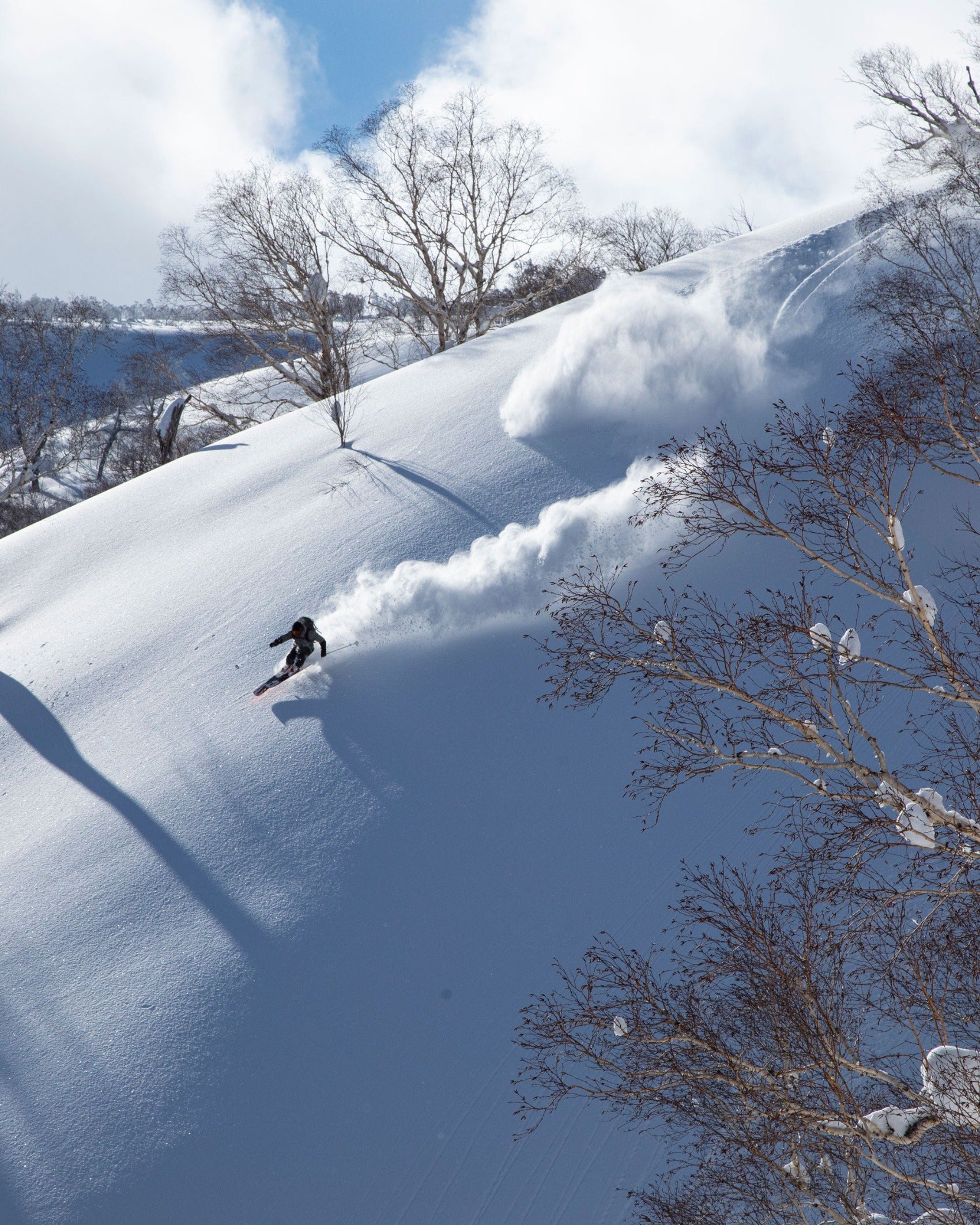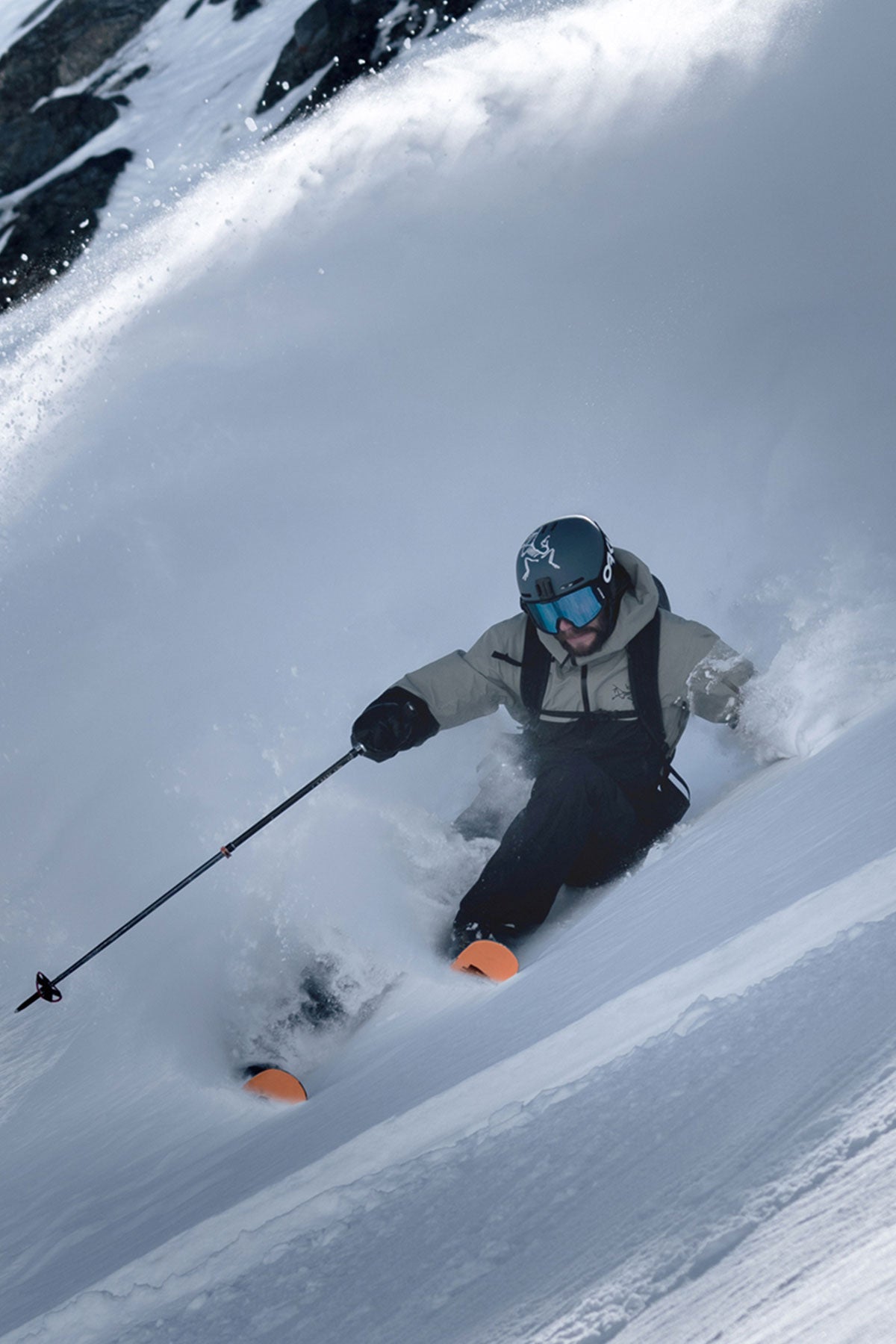Review: 4FRNT Nevar | Everything You Need To Know
What is this blasphemy? Eric "Hoji" Hjorleifson designed a ski with camber? Turns out, he's on to something with the new 4FRNT Nevar backcountry touring ski.

The Hoji Legacy, Reimagined
Eric Hjorleifson—aka “Hoji”—has developed a cult following over the years for his unorthodox, yet genius ski and boot designs. The Canadian pro backcountry freeride skier has influenced nearly every model in 4FRNT’s touring line.
This season, Hoji added a fourth ski to the lineup—alongside the Raven, Hoji, and Renegade—that caught even his most loyal fans off guard.
The Nevar has camber. Yes, really.
In a Nutshell: 4FRNT Nevar Specs
Size skied: 184 cm
Available lengths: 170 / 177 / 184 / 190 cm
Sidecut: 130 mm - 104 mm - 120 mm
Turn radius: 22m (@184 cm)
Profile: Rocker / Camber / Rocker
Weight: 1820g (@184 cm)
Shape, Flex, and Construction
Of course, the big talking point on the Nevar is its traditionally cambered profile—a big departure from Hoji’s design philosophy. He was resistant to the idea at first, but versatility wins. Let’s face it, not everyone skis blower pow every day.
For those outside interior BC, camber = edge hold, and that’s a feature worth embracing.
Beyond the camber, the Nevar shares core design DNA with the rest of the Hoji line:
Turn radius: 22 meters
Mount point: Relatively centered (though more on that below)
Taper lines: Long taper in both tip and tail
Climbing skin system: 4-Lock compatibility
Construction: Aspen/maple core, full-length carbon stringers, neoprene-infused tip
The flex pattern is round and progressive , with:
A stiff section underfoot
Medium flex in the tips and tails
Stable, not noodly—but not an inbounds bruiser either
🔧 Mount Point Insight
While most 4FRNT skis ski great at the recommended mount, the Nevar felt better 1.5cm forward . It brought more tail, slightly looser turns, and a more playful, slashy feel.

On-Snow Performance
📍 Where We Tested:
Grand Targhee Resort (hardpack and groomers)
Teton Pass + Grand Teton National Park (alpine, variable, and storm conditions)
I skied everything from chalk to 15"+ of fresh and high alpine windboard. The Nevar shined most as a "tool-meets-toy" hybrid.
While it put a smile on my face in deep snow, it lacks the float of its bigger siblings the Hoji and Renegade, but that’s ok. Where I found the ski to really shine was ripping around in what we like to call “high-alpine variable” here in the Tetons. It’s the kind of snow we experience during cold high pressure systems when it’s time to go adventure skiing and exploring in the alpine. Those days typically include everything from firm windboard, to a few inches of windblown pow, to crunchy, crusty, or manky snow. In other words, a true mixed bag that requires precise ski technique and alternating between big open freeride turns, controlled jump turns, and everything in between.
The Nevar eats that sh*t up, and confidently skis at high speeds through the stuff, taking the edge off chattery surfaces. The neoprene-infused tip visibly looks like its flopping around all day long, but the edge hold is incredible, with the ski flexing around and absorbing surface irregularities.
Finally, hop turning in steep and committing terrain like couloirs is pleasantly predictable. The low swing weight of the ski comes around easily, and the damp core, long turn radius (shallow sidecut) and camber combine to let the skis really bite into steep, firm surfaces.

Why Reverse Camber Fans Were Shocked
We loved the previous skis for their unapologetic reverse camber —their banana-like shape floated through bottomless pow, making every turn feel like a surfy dream:
Massive float
Easy slashing and pivoting
Energetic and playful ride
But when the powder disappeared, so did edge hold and stability. That’s where camber shines.
What type of skier is the 4FRNT Nevar best for?
There’s often talk about having the appropriate quiver of skis for where you tend to ride, especially if you’re lucky enough to ski enough days a year to be picky about conditions. I’d classify 4FRNT’s Nevar as either a quiver ski, or a quiver-killer ski, depending on where you live.
If you’re an advanced to expert skier who lives and backcountry skis in a place with a thin or dry snowpack (like Colorado, the Eastern Sierra, or the East Coast), this would be an excellent one-ski-to-rule-them-all option. Otherwise, if you live in a place that frequently gets deep snow (think the Tetons, BC, or the PNW), consider it as a great quiver option for adventure skiing, exploring technical lines in the high alpine, or anything that requires longer walks to potentially questionable snow.




